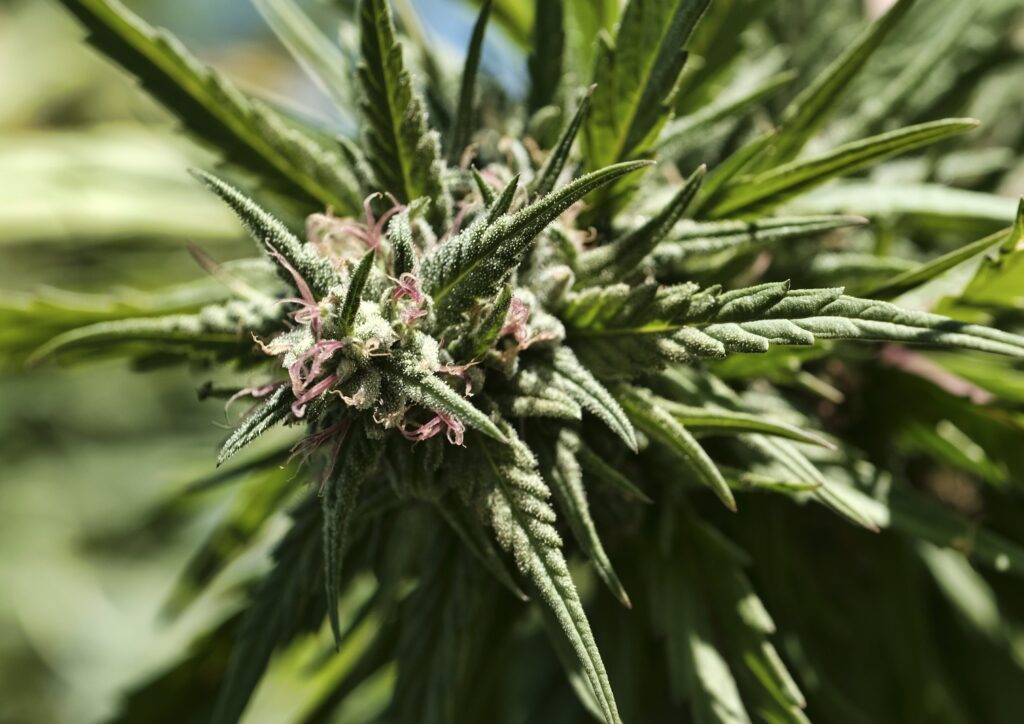Introduction
In the intricate dance of nature, pollination plays a pivotal role in the reproduction of plants, including our beloved cannabis. Understanding how cannabis pollination works is essential for growers, breeders, and enthusiasts alike. In this illuminating blog, we’ll explore the fascinating process of cannabis pollination, unraveling its complexities and shedding light on its significance in the world of cultivation.
The Basics of Pollination

Pollination serves as nature’s intricate mechanism for ensuring the continuation of plant species, including cannabis. This process involves the transfer of pollen, containing male gametes, from the anthers of a male plant to the stigma of a female plant, where female gametes reside. In cannabis, this union sets in motion the fascinating journey of seed production within the female flowers.
The journey of pollen begins when it is released from the male plant’s pollen sacs, typically triggered by environmental cues such as temperature, light, and humidity. Once released, the pollen grains embark on a journey, propelled by wind, insects, or human intervention, until they find their way to the waiting stigma of a receptive female flower.
Upon landing on the stigma, pollen grains germinate, sending pollen tubes down the style to reach the ovules within the ovary. This intricate process of fertilization leads to the formation of seeds within the developing flower, each containing a unique combination of genetic material from both parent plants.
As seeds mature within the female flowers, they become the next generation of cannabis plants, carrying the genetic legacy of their parentage. Whether for propagation, breeding, or sustenance, the process of pollination is a vital component of the cannabis life cycle, shaping the genetic diversity and resilience of the plant species.
Understanding the intricacies of cannabis pollination empowers growers and breeders to harness its potential for their cultivation endeavors. By mastering the art of pollination, cultivators can unlock new possibilities for creating unique strains, enhancing crop yield, and preserving the genetic heritage of cannabis for generations to come.
Male and Female Cannabis Plants
Before delving into pollination, it’s essential to understand the distinction between male and female cannabis plants. Male plants produce pollen-containing structures called pollen sacs, while female plants develop pistils, which capture pollen for fertilization. Female plants are prized for their resinous flowers, rich in cannabinoids, while male plants play a crucial role in pollination for breeding purposes.
Also Read: A Beginner’s Guide to Germinating Cannabis Seeds
The Pollination Process
As a male cannabis plant matures, its pollen sacs burst open, releasing pollen grains into the surrounding environment. These microscopic particles can travel through various mediums, including wind, insects, or human intervention, in search of receptive female flowers. Upon reaching a female flower, the pollen adheres to the stigma, triggering a series of events that culminate in fertilization.
The pollen germinates on the stigma, forming pollen tubes that penetrate the style of the female flower. These tubes serve as conduits for the male gametes, delivering them to the ovules nestled within the ovary of the flower. Once the male gametes reach the ovules, fertilization occurs, initiating the development of seeds within the female flower.
This intricate process of pollination is a critical step in the reproductive cycle of cannabis plants, ensuring the production of viable seeds for future generations. By understanding the mechanics of pollination, growers can optimize their cultivation practices and harness the full potential of this remarkable plant species.
Methods of Pollination
Cannabis pollination can occur through various methods, including:
- Wind: Pollen can be carried by the wind over short distances, allowing for natural pollination in outdoor settings.
- Insects: Bees, butterflies, and other pollinators play a crucial role in cannabis pollination by transferring pollen between plants as they forage for nectar.
- Human Intervention: Growers and breeders can manually pollinate cannabis plants by collecting pollen from male plants and applying it to the stigma of female flowers using a brush or cotton swab.
Implications of Pollination
While pollination is essential for the reproduction of cannabis plants and the creation of new strains, it can have significant implications for growers:
- Seed Production: Pollination leads to the formation of seeds within female flowers, altering the cannabinoid and terpene profiles of the plant and reducing flower quality.
- Unintended Pollination: Uncontrolled pollination can result in unwanted seeds in flower buds, diminishing their market value and potency.
- Breeding Purposes: Controlled pollination allows breeders to create new cannabis strains with desired genetic traits, such as potency, flavor, and yield.
Conclusion
In conclusion, understanding how cannabis pollination works is essential for growers and breeders seeking to optimize their cultivation efforts. Additionally, by grasping the intricacies of male and female cannabis plants, the pollination process, and its implications, cultivators can make informed decisions to maximize yield, quality, and genetic diversity in their gardens. Whether for seed production, breeding purposes, or maintaining seedless flower buds, mastering the art of cannabis pollination empowers growers to navigate the cultivation maze with confidence and precision, unlocking the full potential of this remarkable plant.
